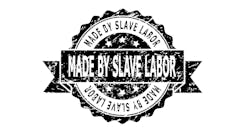Building an organization that supports innovation starts with collective learning and knowledge sharing. Unfortunately, most organizations only leverage about 30% of their collective knowledge. That’s because information stays bottled up in specific departments or even specific employees’ heads, instead of flowing throughout the organization, guiding decisions and encouraging innovation.
To combat this, it’s important to find ways to tap into the full extent of employees’ knowledge and expertise—and help them teach and coach their fellow employees.
Speak the Same Language
For collective learning to work, each employee needs to be both a teacher and a student—and that includes the most senior leaders. Ideally, the organization functions as a giant pool of knowledge that any employee can tap into at any time, and peers help guide each other in the acquisition of new proficiencies, all while working together to develop innovative solutions to the problems that come up.
I have learned that none of this is possible without developing a shared business language that employees can use to exchange information and collaborate among departments. A shared language has other huge benefits: It unifies the company and allows employees to stay motivated and grow during periods of adversity, instead of buckling. Examples of shared languages that I’ve seen effectively used include methodologies such as Lean Manufacturing or Six Sigma for continuous improvement, functional standards such as the Supply Chain Operations Reference Model (SCOR) for supply chain, or specific company terms that can be developed and communicated through a company playbook. All provide a unifying language and reduce potential for miscommunication between teams.
Combine Perspectives
Often, the best solution to a problem is one that combines aspects from three or four individual plans. However, people tend to focus on areas of agreement in meetings, which quashes debate and keeps diverse perspectives locked up. A simple way to include different perspectives is to go around the room, one by one, and get input on ideas, assuring time for everyone to explain their point of view and how it relates to the issue at hand.
Encourage learning over solving, look at combinations of ideas and discuss things that haven’t been done before and why. This starts the process of creating new connections and requires a safe space with open minds.
Most meetings aren’t planned well, so everyone is in a hurry to get on to the next thing. This is part of how that 70% of knowledge never gets used—people get in a hurry and either don’t want or don’t think to share it, especially if it might cause conflict. And if knowledge doesn’t flow, it can’t spark creativity.
People do their best creative thinking when forced to respond to foreign ideas. It’s how most of the best innovations in history have come about—when someone applied an old idea in a new context, to a new problem, or in a new industry. Your ability to be creative grows with the knowledge base that you draw from, and when people don’t share their unique perspectives, they ultimately limit the knowledge base.
Find and Promote Generalists
The best solution in the world still needs to be communicated to be effective. This is one of the reasons that generalists—employees with a background in a wide variety of fields—are particularly important. A manufacturing generalist might be someone who has spent time in planning and procurement as well as manufacturing operations. They know that good plans help to manage manufacturing capacity and provide the procurement team the lead time needed to negotiate good pricing and buy parts with long lead times.
Understanding how those functions connect help everyone be more efficient. Not only can they draw on their diverse experiences to help develop holistic solutions to complicated, multifaceted problems, they are also able to communicate those solutions to various departments in a comprehensible way that ensures alignment.
Create Knowledge Networks
Adhering to a strict, hierarchical chain of command prevents companies from leveraging all of their knowledge. An important step is empowering frontline employees to unlock their unique expertise, but even that isn’t enough to solve all problems. Eventually, a customer will have an issue or a request that falls beyond the scope of a frontline employee’s expertise. Take, for example, something like blockchain, a very specific, highly complicated, game-changing bit of technology. Few, if any, frontline employees can discuss blockchain with a customer who wants to integrate it into their operations. Most frontline employees would pass this request up the chain of command to their manager. The problem is, those middle managers probably know as much, if not less, about blockchain than the frontline workers. The manager might tell the customer something like, “I’m not sure that we can help,” or they might promise to look into it, but never get around to it. The customer either never gets a solution or has to wait for it. The longer they wait, the more opportunity a competitor has to offer the customer what they need and snag their business.
During this entire show of ineffectiveness, there’s probably at least one or two people in the organization—maybe in the IT department, maybe in accounting—who are experts in blockchain. But since it isn’t part of their job description, nobody else in the company knows, and nobody thinks to ask. The customer’s request goes unsatisfied, and we lose that opportunity. If this becomes a pattern for the company, eventually that customer and many others will leave.
Start by identifying the market and technology trends that are impacting your business or your customer, then find someone with a passion for that trend that can lead a monthly discussion on new developments and how they apply to your business. Open the invite to join the conversation to everyone in the company and you’ll start connecting knowledge networks across departments that can help guide your business into the future.
Use Frontline Expertise
Thomas Edison said, “Genius is one percent inspiration, ninety-nine percent perspiration.” In a company, all of that perspiration happens on the front lines. By that, I mean that change and innovation occur differently at different levels of the company. Leaders and more established executives learn and innovate mostly by talking to other leaders, looking at numbers and trying to figure out how best to position the company. That’s the inspiration. But if I ever want to actually implement one of my ideas to change the course of the company, I need to get the frontline team to do something different. And often, it’s the frontline team that drives the change. They identify the issues and find a new way to work. That’s the perspiration.
This is an important consideration in relation to automation. As soon as you automate something, you remove the human element and therefore the potential for innovation. This can be acceptable for extremely repetitive, unchanging core tasks. But if you want to keep growing in an area, you need workers who “sweat the details” every day to get better.
Eric Strafel is the founder of the consulting firm SUMMi7, which helps businesses grow profits and scale innovation with mission-driven purpose. He was the president and CEO of Aviall, a global provider of new aviation parts, supply chain management, and other services to the aerospace aftermarket, which was acquired by Boeing. Previously, he held leadership and program management positions at L3 Communications, Honeywell and Precision Conversions.



